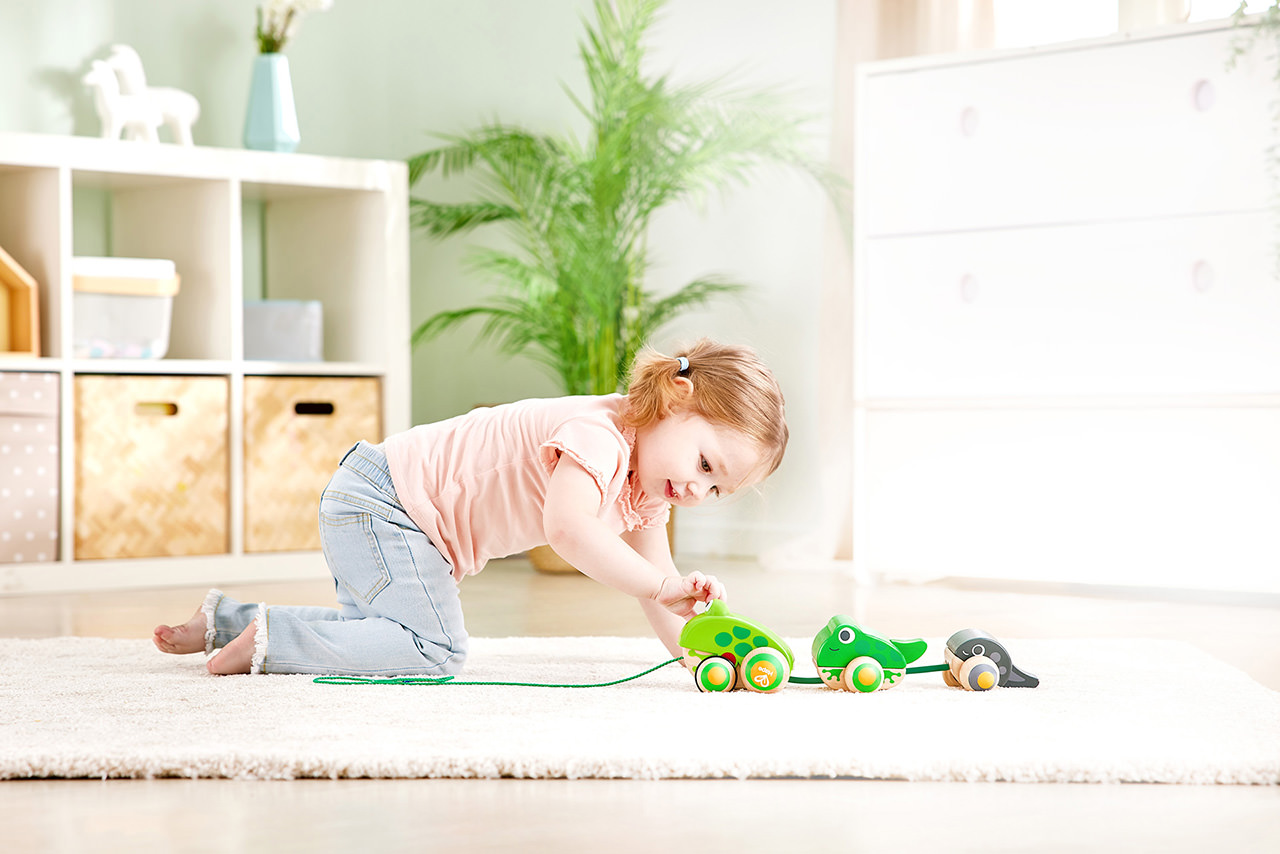27 December 2024
4 min.
As the holiday season brings children many (many) new toys it’s a perfect time to teach them about gratitude and appreciation. Through toy rotation, you keep playtime fun without always needing new toys and games.
By using the Montessori philosophy, we can help children feel happy and grateful for both their old and new toys. This approach also supports young children's development, enhancing their fine motor skills, problem-solving abilities and attention spans.

Toy rotation means letting children play with a select group of toys for a set amount of time – this allows them to explore each toy fully before switching to a new playset or toy.
This method helps reduce clutter, encourages children’s development and makes playtime more engaging and creative. When toys return after a break, children see them differently or even completely new, sparking their interest and curiosity.
The Montessori philosophy emphasises purposeful play, encouraging toys that inspire creativity, nurture development, and promote independent learning. Toy rotation beautifully complements this approach by offering children access to a curated selection of toys at any given time. This helps children develop a deeper connection to each toy while allowing for the introduction of new and engaging activities.
As the focus shifts from an abundance of toys to cherishing the quality and value of each one, children naturally discover the unique features of their toys and explore imaginative ways to play. This approach enhances problem-solving skills, builds attention spans and fosters a meaningful appreciation for the beauty and functionality of their playthings.
After the holiday season, children might find themselves with an abundance of new toys and play sets, which is why this is a great opportunity to try out toy rotation – keeping their play intentional and varied. Here are some ways you can achieve this:
Assess The Collection: Start by taking note of what toys your child has. Look for Montessori toys that encourage open-ended play, pretend play and creativity to really promote the Montessori education values. This could be play sets with no rules or stuffed animals that inspire storytelling and role play.
Integrate Old & New: When making up the sets be sure to include both new toys and well-loved old ones. This balance helps maintain interest as they discover new toys and also inspires them as they play with older toys. This helps support their early development and imaginations by offering new ways to experience their toys.
Establish a Schedule: Decide on a rotation frequency that works for your child’s age and attention span—this could be weekly, bi-weekly, or even monthly.
Involve Your Child: Make the toy rotation process collaborative. Encourage children to help choose which toys they want to rotate. This helps them to develop their autonomy and decision-making as they make difficult choices to put favourites away!
Observe & Adapt: Pay attention to your child’s interests, adapt their toy sets accordingly and be sure to vary the activities. Observation is the key to making toy rotation both successful and enjoyable.
Toy rotation also promotes children’s understanding of sharing. They learn that sharing, including their favourite toys, can lead to joyful group play and new ways of playing with peers. Here’s how to use toy rotation to encourage sharing and thoughtfulness:

Besides making playtime more engaging and reducing clutter, toy rotation sets the stage for a sustainable lifestyle. Taking time to choose and appreciate each toy, we can teach children the joy of simplicity and future sustainable choices.
So there you have it, Montessori-inspired toy rotation helps children experience a more mindful way to play, especially after the chaos of the holiday season.
Children learn to see the value in each toy whilst promoting their contentment, creativity and gratitude. As we start the new year, let’s help our children play mindfully. This approach supports their growth, fine motor skills, and overall well-being—one toy at a time.
